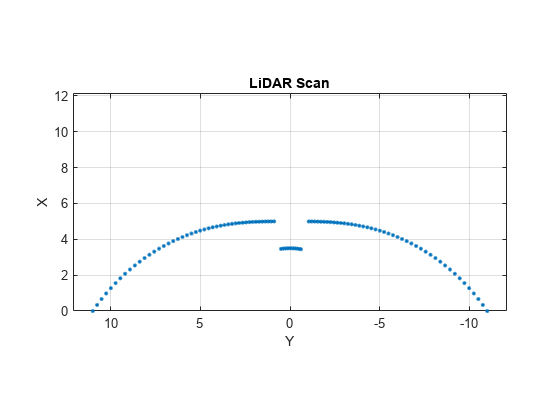plot
Display laser or lidar scan readings
Description
plot( plots the laser scan
readings specified in the input scanMsg)LaserScan object message. Axes are automatically scaled to the maximum
range that the laser scanner supports.
Note
plot will be removed. Use rosPlot instead. For more
information, see ROS Message Structure Functions
plot(___,Name,Value) provides additional options
specified by one or more Name,Value pair arguments.
linehandle = plot(___)linehandle to modify properties of the
line series after it is created.
When plotting ROS laser scan messages, MATLAB® follows the standard ROS convention for axis orientation. This convention states that positive x is forward, positive y is left, and positive z is up. For more information, see Axis Orientation on the ROS Wiki.



